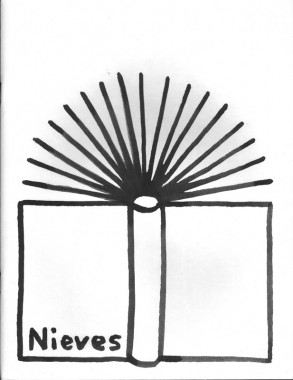
Huge Supplement
Softcover, 24 pp., offset 4/4, 195 x 255 mm
Edition of 1000
Supplement to Huge Magazine No. 72
Published by Nieves
$12.00 ·
Huge Supplement (supplement to Huge Magazine No. 72) with Beni Bischof, Chris Johanson, Dimitri Broquard, Hendrik Hegray, Ingo Giezendanner, Johanna Jackson, Kim Gordon, Rita Ackermann, Stefan Marx, Warja Lavater, and Will Sweeney.
Art, Beni Bischof, Chris Johanson, Dimitri Broquard, Distribution, Hendrik Hegray, Huge Magazine, Ingo Giezendanner, Johanna Jackson, Kim Gordon, Nieves, Rita Ackermann, Stefan Marx, Warja Lavater, Will Sweeney
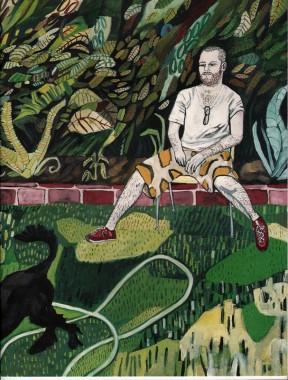
Raffi Kalenderian, Memoranda
Softcover, 24 pp., offset 4/4, 195 x 255 mm
Edition of 1000
ISBN 978-3-905714-85-2
Published by Nieves
$18.00 ·
In Kalenderian’s works everything plays on the foreground. There are no horizons and no perspective. The artist reveals his world directly to us, showing us his friends, as if he had no secrets. His friends often seem melancholic while their environment is very colourful. Colourful details of clothes, materials or furniture seem to be striving to attract the spectator’s attention and distract from the figures. We often encounter the figure Shanti. Shanti is the artist´s brother. He is painted as a young man, sometimes almost androgynous, sometimes like a tough guy. It remains uncertain whether Kalenderian wants to reveal something to us about Shanti, Frankie or Elizabeth with his paintings. None of the figures look directly at us, but all of them seem to be in contact with us. We are the witnesses of their existence.
Memoranda, the title of the book and exhibition, can be likening portraiture to notes and memos kept for history, but not too specific to take away from someone’s own unique experience. In fact Kalenderian’s works are, as the artists himself states, a proof or better an evidence of existence.
Art, Distribution, Nieves, Raffi Kalenderian, Shanti Kalenderian
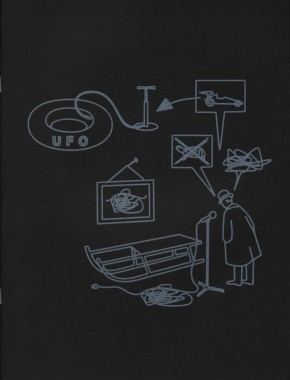
Jürg Lehni and Alex Rich, Things to Say (Viktor)
Softcover, 16 pp., offset 1/1, 195 x 255 mm
Edition of 1000
ISBN 978-3-905714-70-8
Published by Nieves
$14.00 ·
Before
Viktor there was
Hektor, a relatively simple spray-can output device driven by two motors. Invented in collaboration with the engineer Uli Franke, it made its debut as Jürg Lehni’s art-school graduation project at the Ecole Cantonale d’Art de Lausanne (ECAL) in 2002 and has performed regularly ever since.
Far from being a closed mechanical device — a black box between creative impulse and output — the concern of Hektor (and now Viktor) is the nuanced interaction between the user and the technologies of communication. The drawing machine Viktor is an amalgam of digital and mechanical technologies. A collage of tools, all of which were invented for other general and specific uses.
In response to the position of such technologies, Lehni together with Alex Rich started an ongoing e-mail correspondence about various devices, systems and technologies with which their work had a resonance. Lehni and Rich constructed an archive, one that they came to call A Recent History of Writing & Drawing and which inspired their installation at the Institute of Contemporary Arts, London (2008).
Upending assumptions that any one kind of communication is more authentic, more direct or more valid that any other, A Recent History of Writing & Drawing finds meaning, texture and poetry in the most unlikely places.
Things to Say (Viktor) is the first in a series of collected drawings produced in collaboration with invited guests to perform with Viktor every Thursday evening at the ICA throughout the duration of the exhibition, curated by Emily King.
Alex Rich, Art, Distribution, Ecole Cantonale d’Art de Lausanne, Emily King, Hektor, Jürg Lehni, Nieves, Uli Franke, Viktor
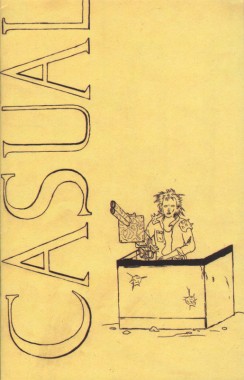
Matt Lock, Time Fears
Softcover, 16 pp., offset 4/4, 112 x 178 mm
Edition of 1000
ISBN 978-3-905714-81-4
Published by Nieves
$8.00 ·
“Nearly all of the pieces featured in this little publication were created in 2009 or 2010: a highly transformative period of time in my life. I began 2009 full of anxiety over the collapse of industrial civilization, almost all of my thinking dealt in speculating on the future. I was drawing a lot of ruins; ruins of a once high level civilization, landscapes of twisted metal, abandoned buildings and scattered garbage. Throughout this world strode weary wanderers, paranoids, thieves and criminals. There’s a streak of danger running throughout much of my 2009/2010 work. In the past, many of my characters looked as if they were hanging out rather comfortably (for the most part). These current characters are a bit more skittish, on edge. The spaces they inhabit are often unsettling… about to crumble or implode.
I’m obviously projecting a lot of my own fears and unease onto these drawings. The world that I’ve portrayed here is a broken world, a variation of a world I feel I’m being rapidly pushed towards. I find myself taking much of what I find around me and throwing it out into the future; I draw it into the future. I believe that I do this because I spend so much time in the future, mentally speaking. Time is a merciless tyrant, an enemy with whom I’ve been mentally battling this past year. I’ve always had time fears but never have they been so intense. There’s a fear of growing older, a fear of losing my youth (decay). And therein arises an urgency to “do something with myself” before I’m old and stuck in some kind of debt-trap or miserable job.
There’s a fear of the future and the large calamities that hide within it (nearly everything feels so uncertain and fragile to me). And then there’s a tremendous fear of destitution, as I’m always just barely making it by with each passing week. This overarching theme of “time fear” binds my work together and reveals the fractured nature of my mind (so much of which still resides in the future).
I seem to live in two worlds: the present and the soon-to-be. This collection of artwork is very personal to me, as I’m sure you can understand. I hope that you who identify with my time-based worries will bond with these pieces, perhaps finding your own time fears in my drawings and paintings, and I hope those of you less inclined to worry about time will find something here to ponder on and smile about.”
— Matt Lock
Art, Distribution, Insurrection, Matt lock, Nieves
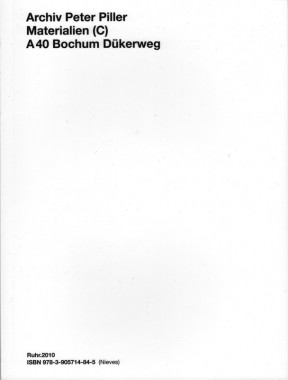
Peter Piller, Materialien (C)
Softcover, 62 pp., offset 4/4, 155 x 205 mm
Edition of 1000
ISBN 978-3-905714-84-5
Published by Nieves
$20.00 ·
Photographic portrait of the near surroundings of Ruhrschnellweg, freeway 40 in Bochum, Dükerweg with allotments, car tuning, cemetery, Burger King, noise barrier and fire station.
Art, Burger King, Distribution, Hans-Peter Feldmann, Nieves, Peter Piller, Photography
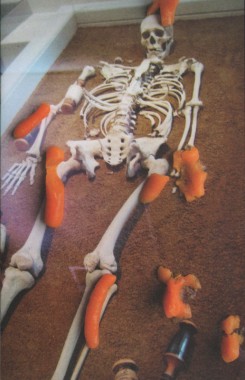
Erik Steinbrecher, Möhren in Athen
Softcover, 16 pp., offset 4/4, 112 x 178 mm
Edition of 1000
ISBN 978-3-905714-83-8
Published by Nieves
$8.00 ·
For his show
Wind in Athens/Möhren in Athen Erik Steinbrecher left Berlin for Athens, his suitcase packed with carrots. The artist’s art odyssee began. His chosen site for an intervention was the National Archaeological Museum. It is considered one of the great museums of the world and contains the richest collection of some of the most important artifacts from Greek antiquity worldwide. During his visit, Steinbrecher installed single carrots in the exhibition spaces; close to sculptures and artfacts, on bases and behind walls.
This sculptural and performative intervention has been photographed by the artist himself. For this publication Steinbrecher overworked these documents.
Art, Culture, Distribution, Erik Steinbrecher, National Archaeological Museum, Nieves
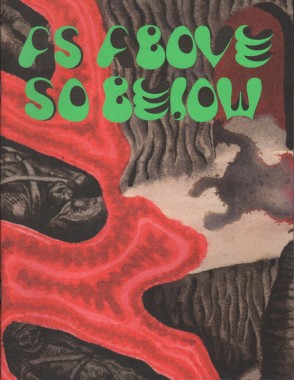
Will Sweeney, As Above So Below
Softcover, 16 pp., offset 5/5, 195 x 255 mm
Edition of 1000
ISBN 978-3-905714-78-4
Published by Nieves
$14.00 · out of stock –>
As Above So Below is a visual narrative based on a series of randomly selected photographs from my collection of National Geographic Magazine, dating between 1940 and the present day. The idea was to take visual motifs from a version of the real world and push them into the realm of the subconscious, a kind of dream generator. Dreams are made up of fragments of experiences, elements of stories which when laid side by side, often become striking or fantastical. Using a random number generating website I created a series of numbers. Each series became a month, year and page number, which were then cross referenced with a corresponding magazine. The first image that came up was from an article describing an archeological dig at a Corsican pagan tomb, the second a photograph of temple street market in Hong Kong, other references came up with pages of text and I would fix upon a phrase or name which conjured up an interesting image — such as an unfinished castle, upon an island or an animal shedding it’s skin. The theme of crossing dimensions and of an event happening simultaneously across the world emerged. The title comes from medieval hermetic philosophy, and relates to the alchemical relationship between microcosm (the body) and macrocosm (the universe).
Art, Distribution, National Geographic, Nieves, Will Sweeney
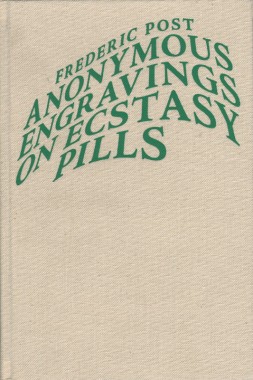
Frédéric Post, Anonymous Engravings on Ecstasy Pills
Hardcover, 544 pp., offset 1/1, 154 x 232 mm
Edition of 500
ISBN 978-2-940409-02-0
Published by Boabooks
$68.00 ·
The patterns used in
Anonymous Engravings on Ecstasy Pills were designed by unknown people who abandoned them. In this book of drawings, Frédéric Post offers a piece of research worthy of a modern-times archaeologist. He collected and re-created these figures, conferring thus value to an underground iconography of over 500 signs.
The classification of the drawings into three groups (figures, typography, symbols) was carried out with Izet Sheshivari. The collection shows elements of a visual folklore that hints at popular figures. The book implicitly describes our societies’ ambiguities: “Nowadays, with drug use, we want to experiment this unconstrained pleasure, disrupt the humdrum routine, make love longer; we want to party even though we are tired (…). At the end of the day, this is in line with the whole idea of work, profitability and performance”. Is ecstasy therefore an excessive metaphor of the market economy?
Art, Boabooks, Culture, Distribution, Frédéric Post, Izet Sheshivari
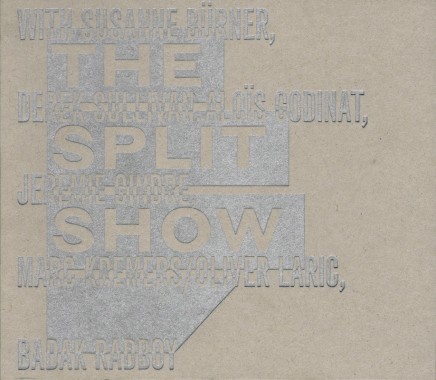
The Split Show
Hardcover, 144 pp., offset 4/1, 230 x 200 mm
Edition of 450
ISBN 978-2-940409-18-1
Published by Boabooks
$38.00 ·
A wall-less group show
Publishing a book is in many ways similar to curating a show. The Split Show is the outcome in this idea — a group artists book. The basic idea was to ask artists to create a recto/verso 720 x 1020 mm poster. Once folded, this format becomes a 24-page 230 x 200 mm folio.
Aloïs Godinat, Art, Babak Radboy, Boabooks, Derek Sullivan, Distribution, Izet Sheshivari, Jérémie Gindre, Marc Kremers, Oliver Laric, Susanne Bürner
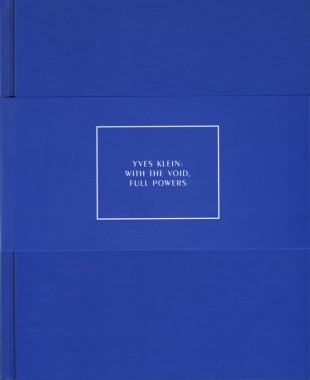
Kerry Brougher and Philippe Vergne, Yves Klein: With The Void, Full Powers
Hardcover, 352 pp., offset 4/4, 8 x 10 inches
Edition of 5000
ISBN 978-0-935640-94-6
Published by Walker Art Center
$65.00 ·
Yves Klein: With the Void, Full Powers is published to accompany the first major retrospective of the artist’s work in the United States in nearly 30 years. It includes examples from all of Klein’s major series, including his Anthropometries, Cosmogonies, fire paintings, planetary reliefs and blue monochromes, as well as selections of his lesser-known gold and pink monochromes, body and sponge reliefs, “air architecture” and immaterial works. Essays by curators Kerry Brougher and Philippe Vergne, Klein scholar Klaus Ottmann, art historian Kaira M. Cabañas and curatorial fellow Andria Hickey, as well as archival materials and translations of Klein’s published and unpublished writings, offer insights into the artist’s endeavors and process. Born in Nice, France, in 1928, Yves Klein created what he considered his first artwork when he signed the sky above Nice in 1947, making his earliest attempt to capture the immaterial. The artist carved out new aesthetic and theoretical territory based on his study of the mystical sect Rosicrucianism, philosophical and poetic investigations of space and science, and the practice of Judo, which he described as “the discovery of the human body in a spiritual space.”
Andrew Blauvelt, Andria Hickey, Architecture, Art, Dante Hong Carlos, DAP, Deborah Horowitz, Hatje Cantz, Hirshhorn Museum, Kaira M. Cabañas, Kerry Brougher, Klaus Ottmann, Lisa Middag, Philippe Vergne, Theory, Walker Art Center, Yves Klein
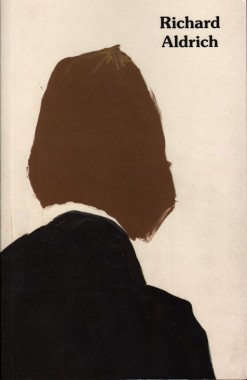
Richard Aldrich
Softcover, 96 pp., offset 4/4, 5.5 x 8.5 inches
Edition of 1000
ISBN 978-0-615-26984-9
Published by Bortolami
$25.00 ·
Richard Aldrich’s abstract painting juggles delicacy of line and palette with warmth of touch, a combination that fills his works with a cheerful humanity, or what Art in Review memorably described as a “slackerish cosmopolitanism.” Collage elements introduce a playful take on Whistler’s famous portrait of his mother.
An Art Service, Art, Bortolami, DAP, Farzad Owrang, Jay Sanders, Richard Aldrich
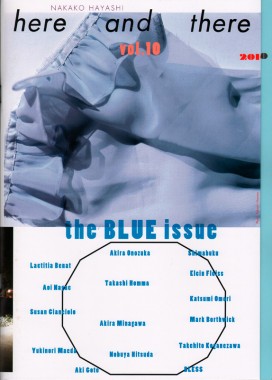
Nakako Hayashi, Here and There 10
Softcover, 64 pp., offset 4/duotone, 210 x 297 mm
Edition of 1000
ISBN 978-3-905714-88-3
Published by Nieves
$20.00 ·
“A year ago, I visited Aichi prefecture in the end of summer. It was to reflect on the work of Nobuya Hitsuda, as well as to see the exhibition “In the Little Playground: Hitsuda Nobuya and his surrounding students” that reflects on the time, in his 40 years of teaching experience, he spent with his students, such as Yoshitomo Nara, Hiroshi Sugito, Kyoko Murase, Mika Kato and many more.
Although having visited on an assignment, I was overwhelmed with emotion. Even for people who are actively recognized, there are still moments, numerous times in your life, where one needs to spend those blue hours alone. The process, to be alone, to suffer with unsettled emotion, is necessary to move forward.
Around the same time, I was asked by chance to write an essay, and decided to write on raising children. Raising children is also about continuous time that cannot be controlled. In the end of that summer, those were the two things that were on my mind, so I decided to put together an issue for Here and There, focusing on the blue hour that can make our lives colorful, as well as the color blue itself.
I looked up at the blue sky. Blue is a color that represents the beauty of nature, but at the same time, it exists in many things manmade. Blue can be found in clothing you wear against your skin, somewhere near you, and far away. The aim is to seek for a blue in personal emotions and in the growing process of people and to find it scattered in the world. This, hoping that it will be an attempt to sprout something in people’s hearts.”
—Nakako Hayashi
Aki Goto, Akira Minagawa, Akira Onozuka, Aoi Nagae, Art, Bless, Distribution, Elein Fleiss, Fashion, Here and There, Katsumi Omori, Kazunari Hattori, Lactitia Benat, Mark Borthwick, Nakako Hayashi, Nieves, Nobuya Hitsuda, Susan Cian, Takashi Homma, Takehito Koganezawa, Yukinori Maeda
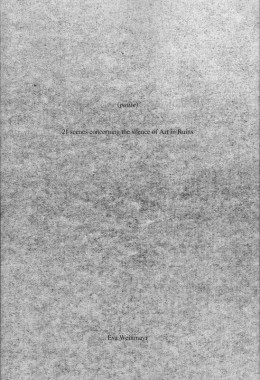
Eva Weinmayr, (pause) 21 scenes concerning the silence of Art in Ruins
Softcover, 72 pp., offset 1/1, 210 x 297 mm
Edition of 500
ISBN 978-0-9562605-4-3
Published by Occasional Papers
$16.00 ·
Why did Art in Ruins, a once prominent art collective, suddenly fall off the art world map? Did they run out of ideas, move on to other territories or simply withdraw in disgust? During brief lulls in their frenetic peregrinations around the glittering international art circuit, a loose group of artists, curators, critics and other art professionals discuss the mysterious disappearance of Art in Ruins, maintaining a sober tone of inquiry even as they encounter herds of bison, anomalous Richard Serra walls and security personnel steeped in art theory. Using actual dialogue from interviews with art professionals who knew Art in Ruins, Eva Weinmayr constructs a hypothetical play as an anti-documentary or anti-biography.
Art, Criticism, Distribution, Eva Weinmayr, Fiction, Occasional Papers, Richard Serra, Sara De Bondt, Theory, Zacheta National Gallery of Art












